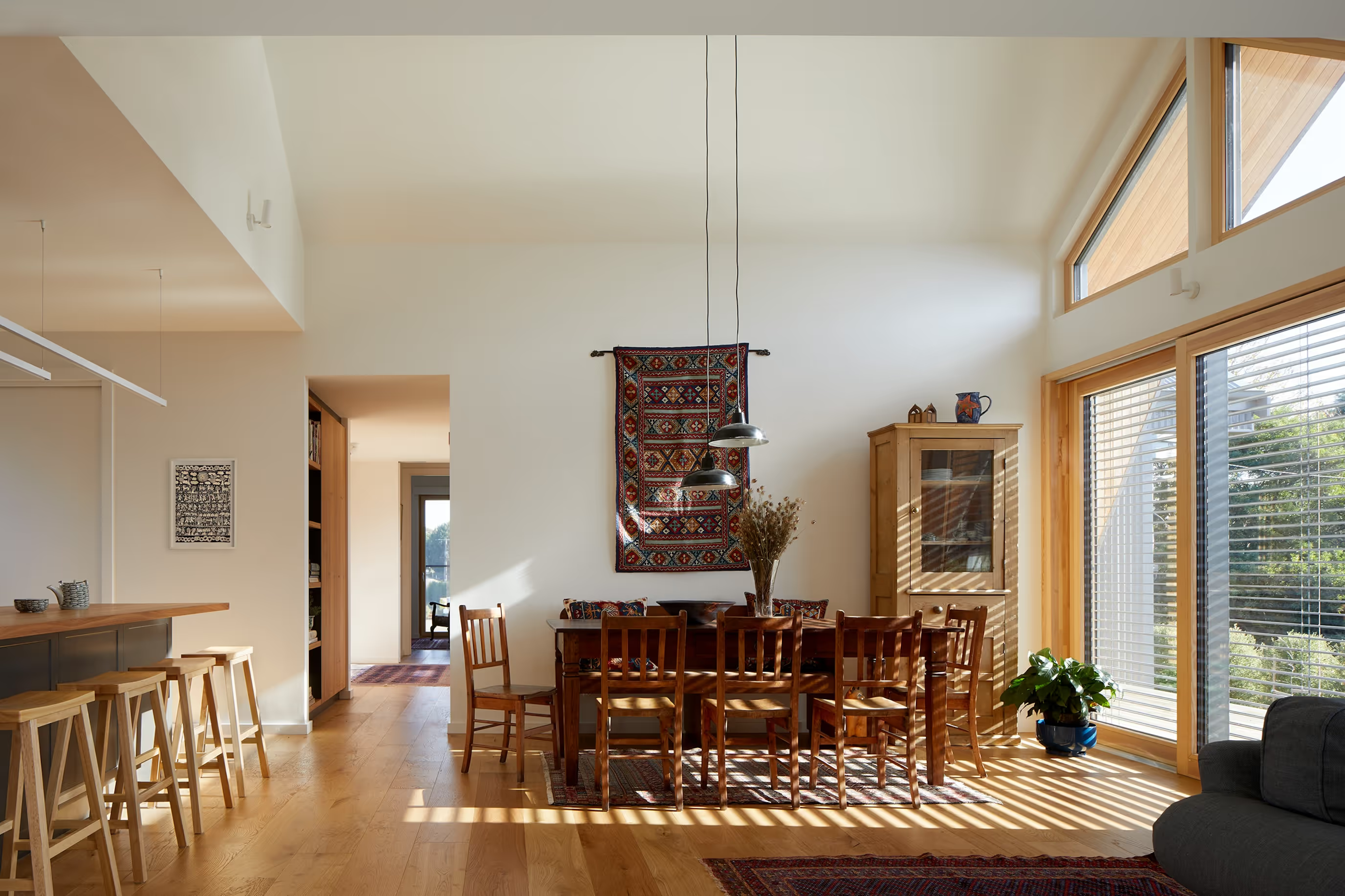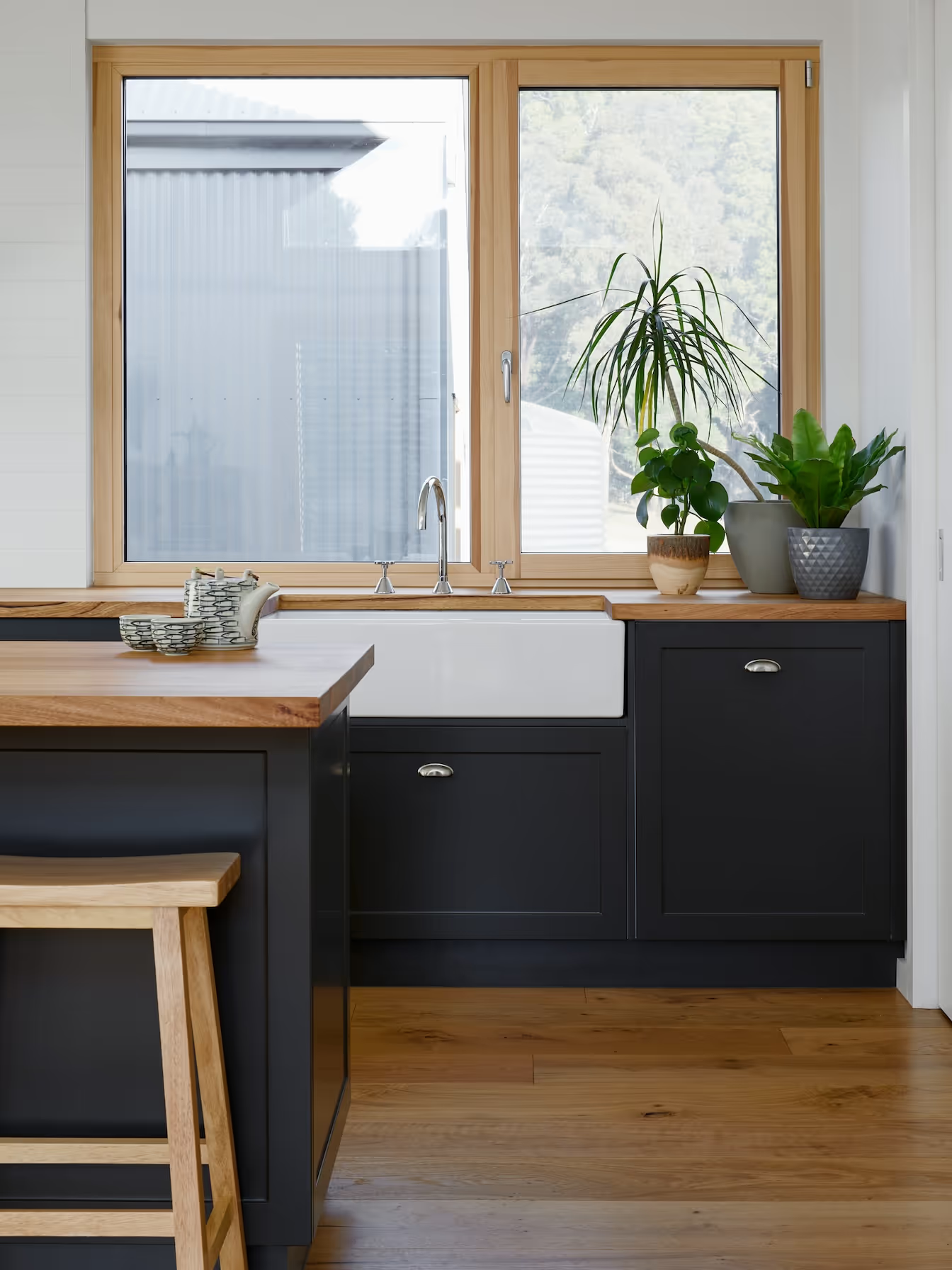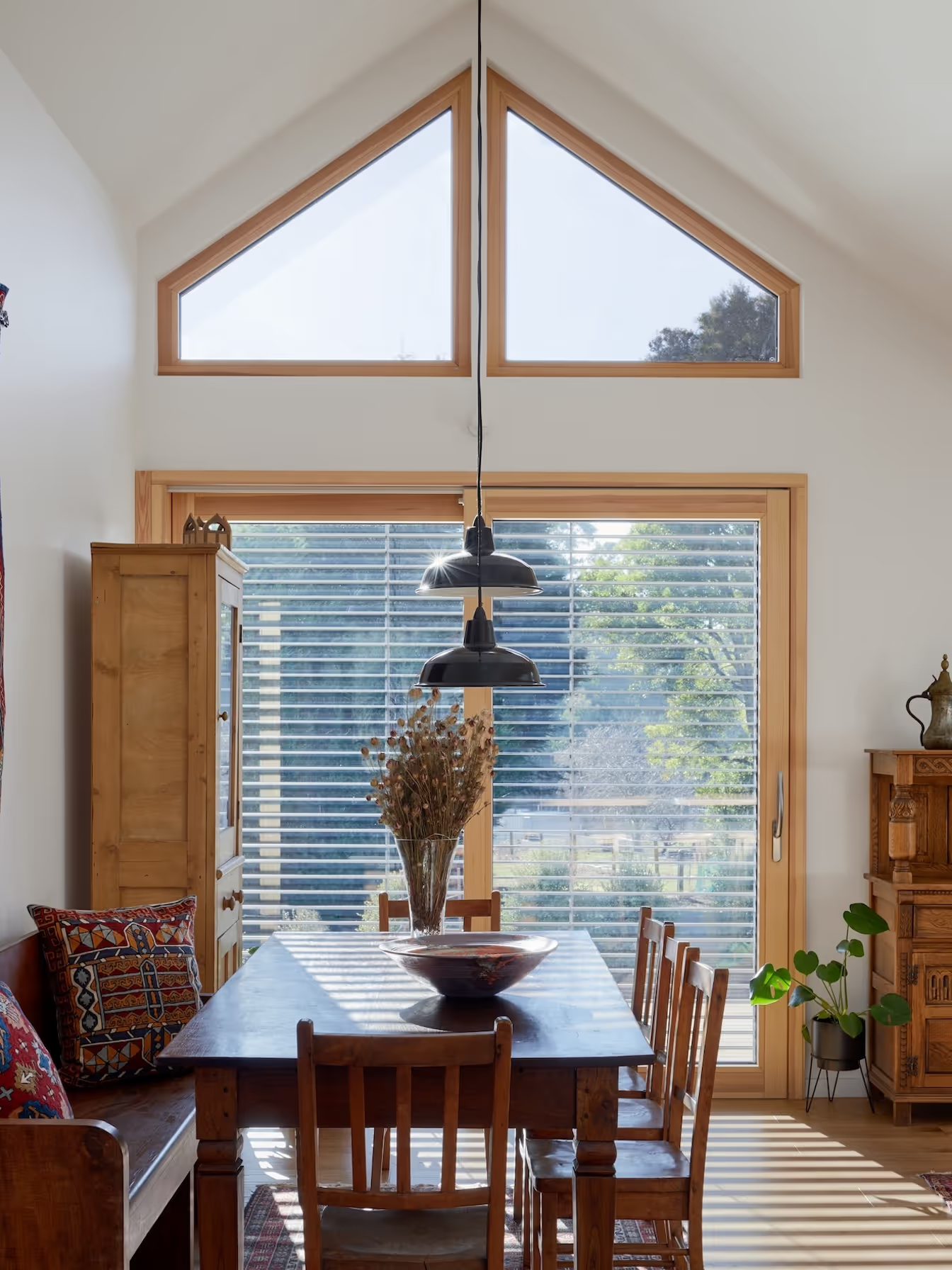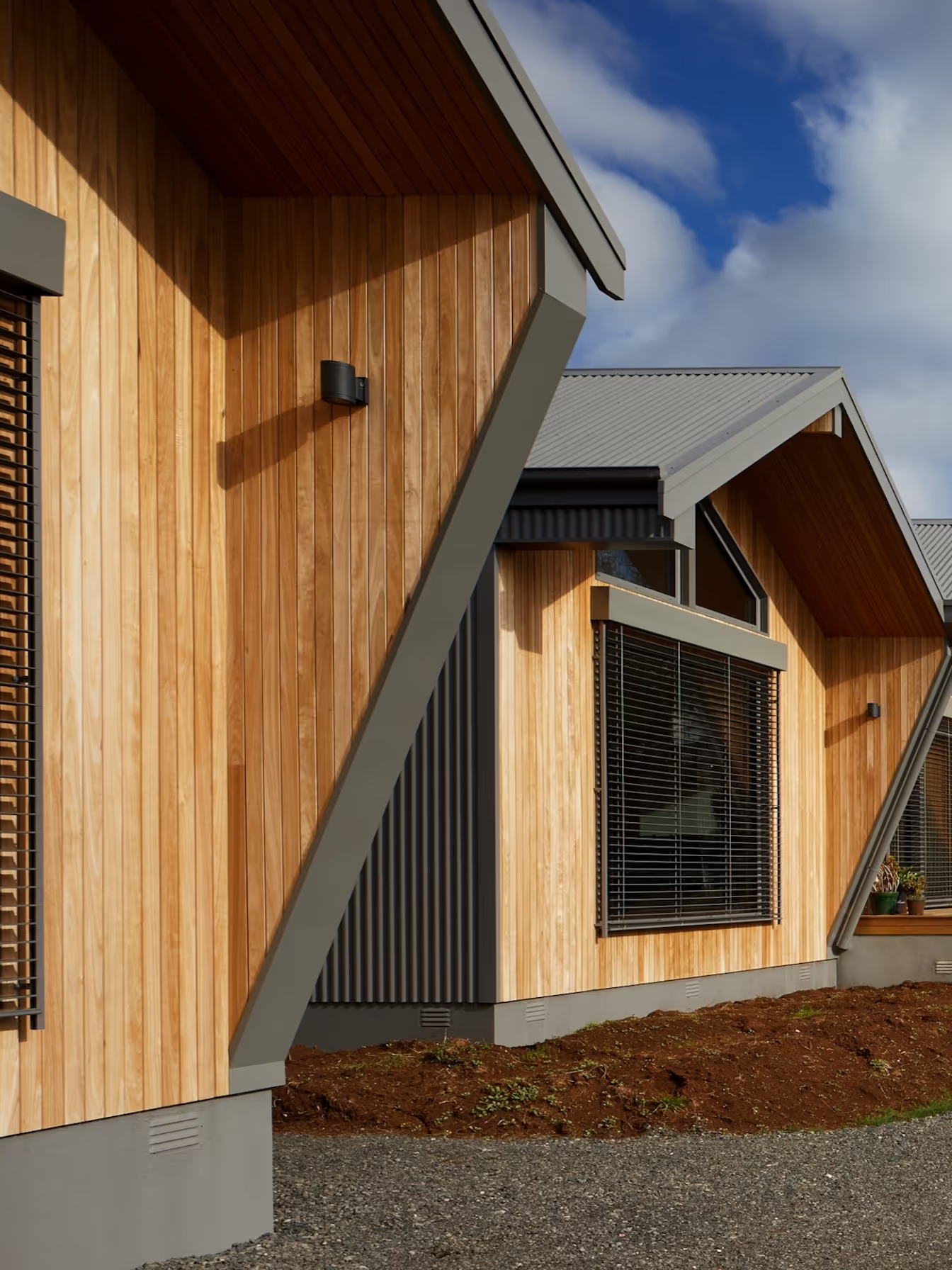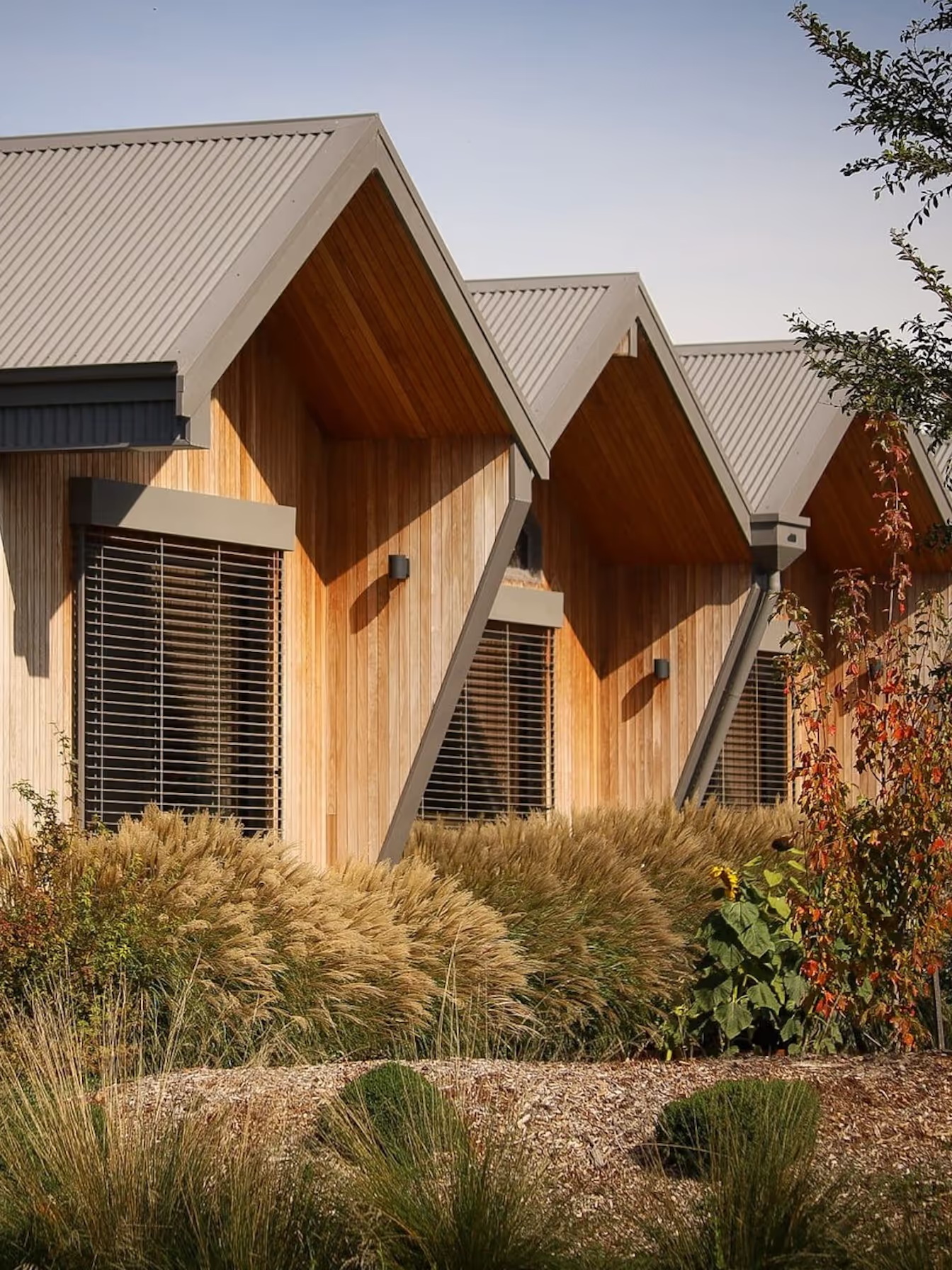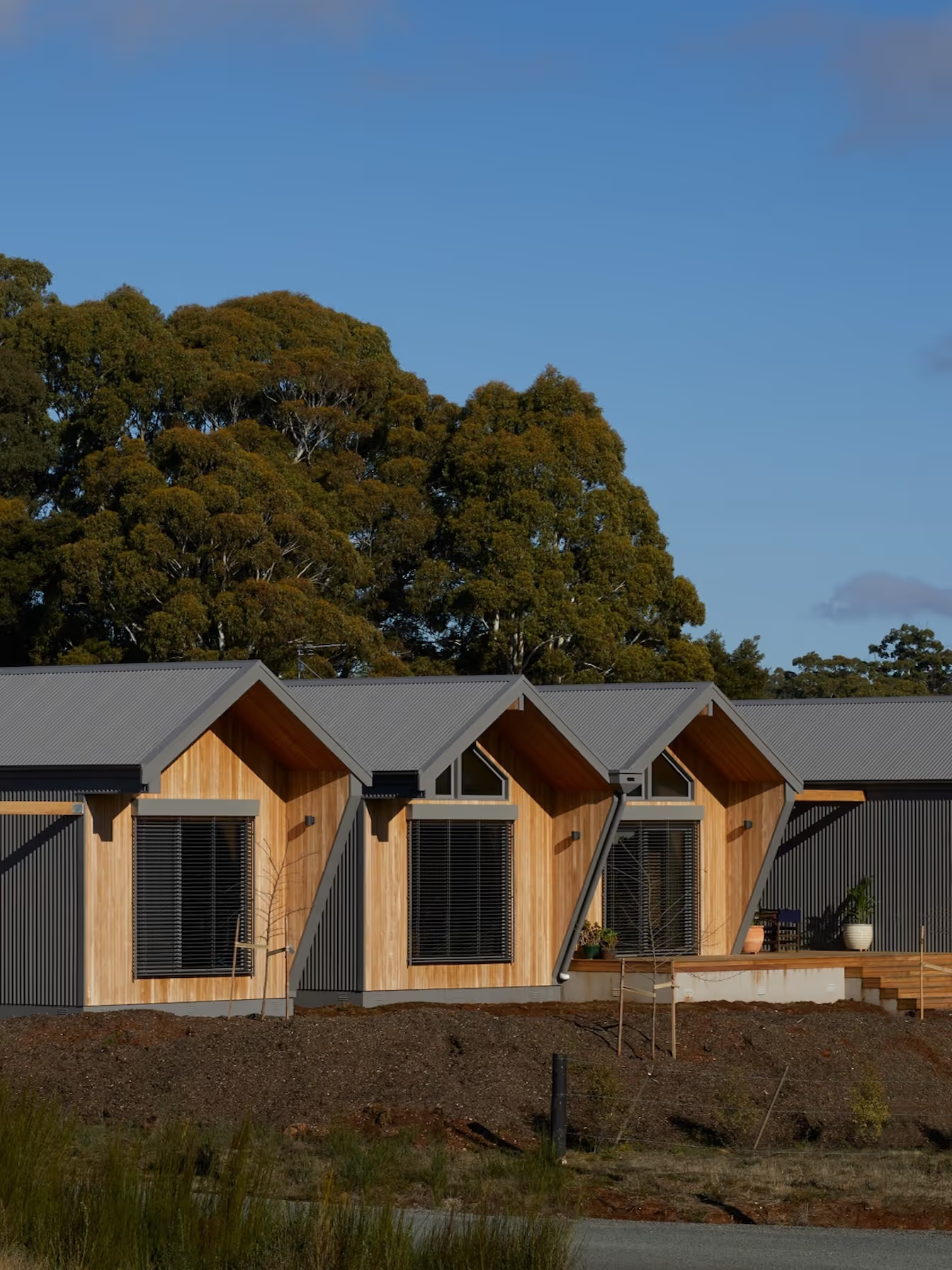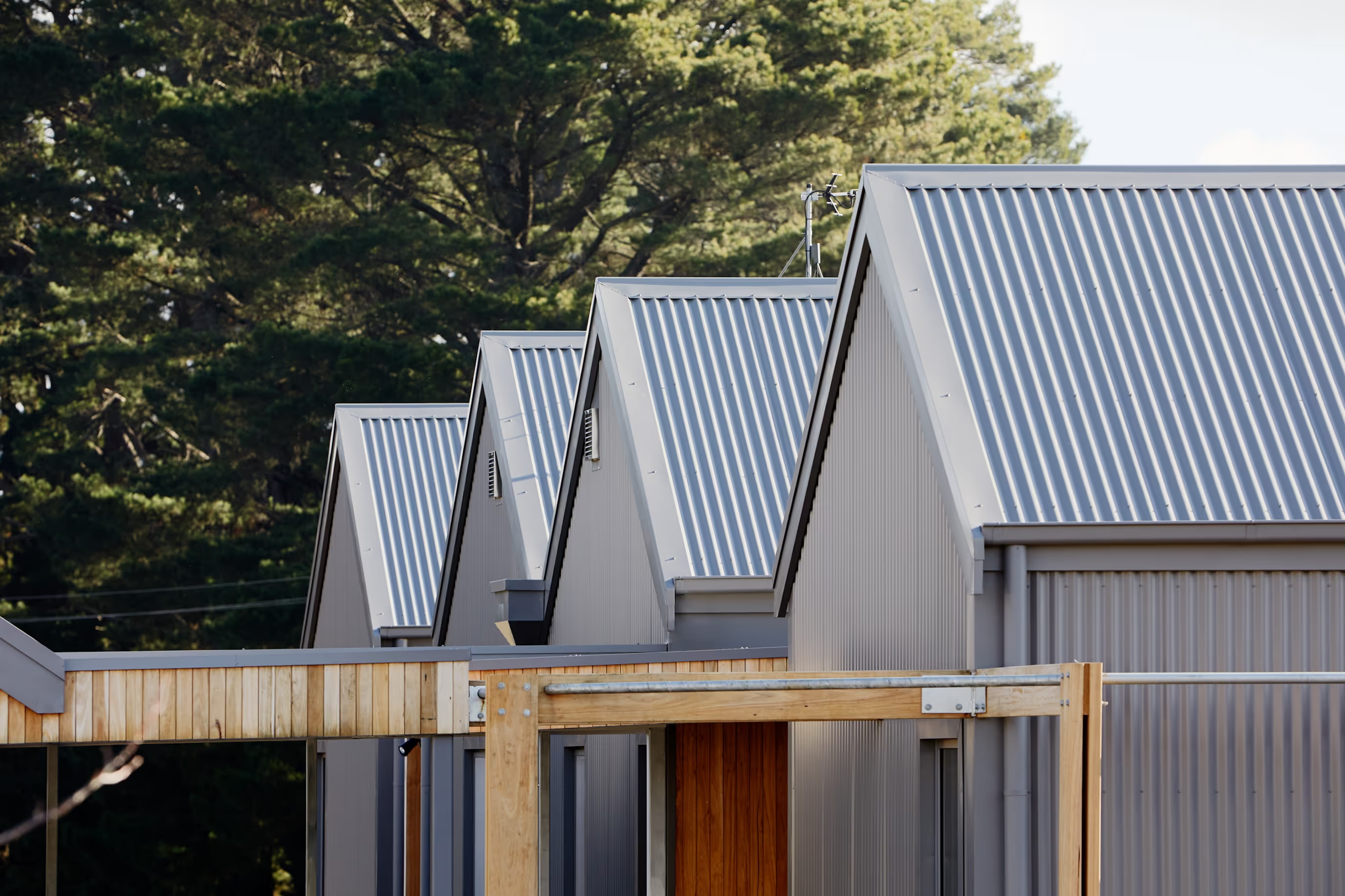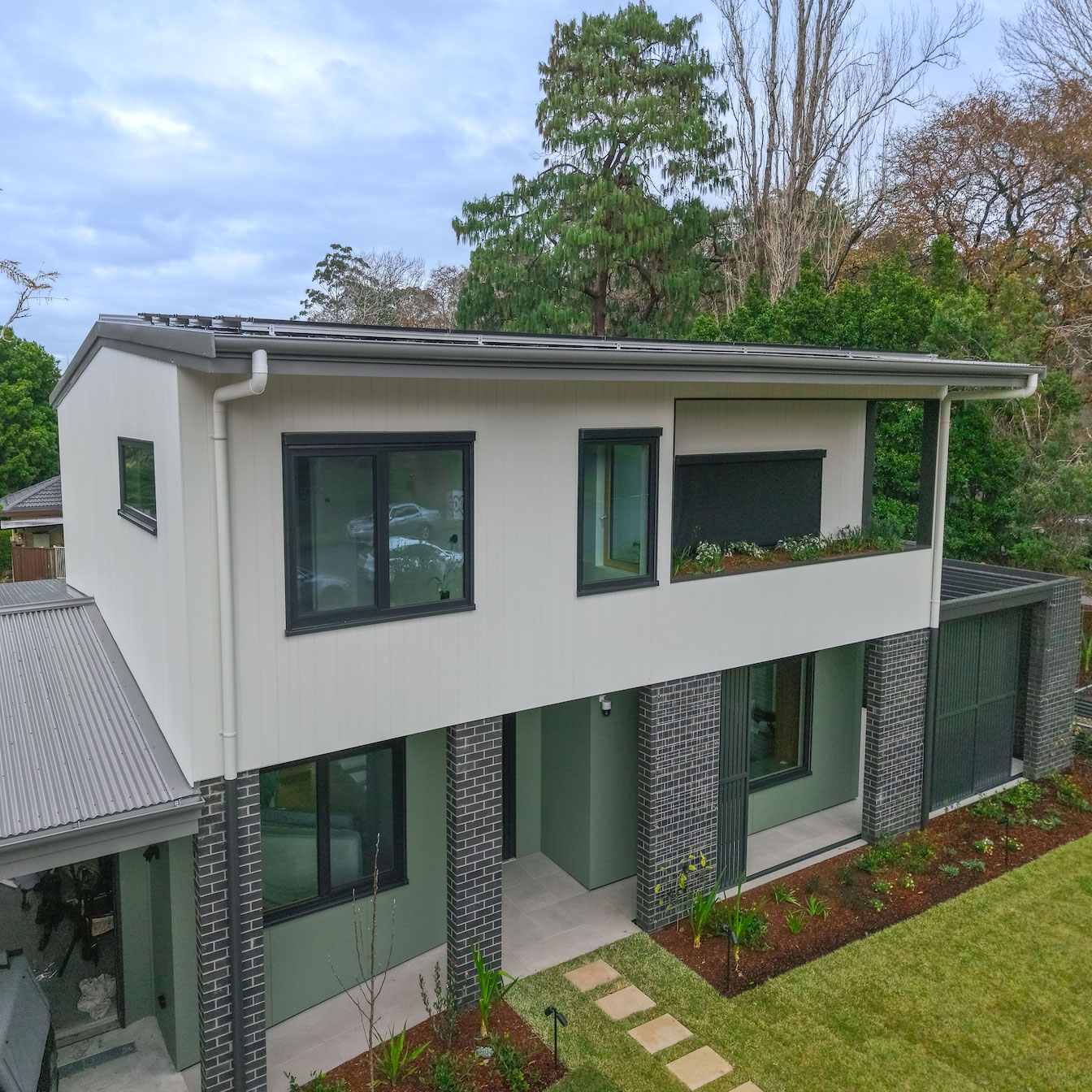
This exquisitely-crafted home was one of the first handful of certified Passivhaus houses in Victoria. It showcases the flexibility of the Passivhaus standard.
The outstanding comfort and energy efficiency this approach guarantees can perfectly meld with the highest design aesthetics and a biophilic sensibility. The house is in Trentham, an hour north of Melbourne. At 700m, Trentham has the distinction of being the coldest town in Victoria while also experiencing summer highs of 40C or more.
This home plays on the development’s name with a cluster of birdhouse-like forms nestled in a developing native woodland. The contemporary pavilion style layout creates a diversity of indoor environments to enjoy. At 170m2 (TFA), this is not a sprawling home. Instead it uses its spaces in clever and thoughtful ways, with guest bedrooms in the western wing that can be used as offices or additional living areas. The pavilions create sheltered outdoor rooms and beautiful outlooks.
The house faces slightly north-west because of the building envelope specified for the site. The Passivhaus energy modelling at design stage provided vital feedback for design details that maintain a comfortable interior temperature all year round with minimal active heating and cooling. The roofs fold down on the western sides, forming wings that shelter each pavilion from afternoon summer sun. The pitched roofs stretch out to the north in a unique ‘birds-beak’ shape that also provides summer shading. External blinds and deciduous planting also protect the house at different times of the day and year. The design welcomes the low winter sun, which brings warmth to the central living areas during cold months.
Biophilic principles abound and influence the carefully chosen selection of materials. Natural, healthy, durable and sustainably sourced were key criteria, along with colours and forms that relate to the Australian landscape. Minimising the embodied carbon emissions associated with the build was important too. Locally sourced radial-sawn native timber complements the gray corrugated steel cladding, which sits over a lightweight timber frame. Reclaimed timber was used onsite and recyclable steel sheeting for the roofing.
The home generates more energy from its PV array than it uses over a year. It also has a heat pump hot water system, low flow water fittings, hot water recirculation, rainwater harvesting, a heat exchange ventilation system that ensures fresh, filtered air at all times and a split system air conditioner that delivers top-up active heating and cooling.
For more technical detail, see project #5851 on the PHI Passive House database.
